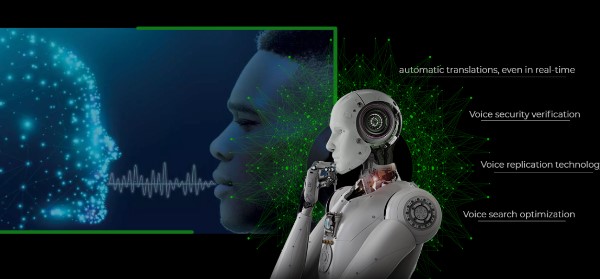Voice Recognition Technology: Streamlining Communication
In today’s fast-paced world, communication is key. With the rise of technology, it has become easier to connect with others through various means such as text messages, emails, and social media platforms. However, one form of communication that has been gaining popularity in recent years is voice recognition technology.
Voice recognition technology allows users to interact with devices or software through spoken commands. This technology has been around for a while, but recent advancements and improvements have made it more accurate and efficient, leading to its widespread use in various industries.
How Does Voice Recognition Technology Work?
Voice recognition technology uses algorithms and artificial intelligence (AI) to convert spoken words into digital data. This data is then analyzed and processed by the software or device to carry out a specific command. The process involves multiple steps, including voice activation, speech recognition, and natural language processing.
Voice activation is when the system detects a person’s voice and begins to listen for commands. Speech recognition is the process of converting spoken words into text, while natural language processing allows the system to understand and interpret the meaning behind those words.
Voice Recognition Technology in Everyday Life
Voice recognition technology has become a part of our daily lives, whether we realize it or not. Some common examples include virtual assistants like Amazon’s Alexa and Apple’s Siri, which can answer questions, set reminders, and control smart home devices through voice commands.
In the healthcare industry, voice recognition technology is being used to streamline medical documentation, making it faster and more accurate. This allows healthcare professionals to spend more time with patients and less time on administrative tasks.
In the automotive industry, voice recognition technology is being integrated into vehicles for hands-free communication and control of features like navigation and music selection. This not only improves convenience for drivers but also promotes safety by minimizing distractions while driving.
Benefits of Voice Recognition Technology
One of the biggest benefits of voice recognition technology is its convenience. With this technology, users can perform tasks hands-free, making it ideal for situations where manual interaction may not be possible or safe.
Another benefit is increased efficiency. Voice recognition technology allows for faster and more accurate completion of tasks, reducing the need for manual input and increasing productivity.
Moreover, voice recognition technology promotes inclusivity. It allows individuals with physical disabilities or those who have difficulty typing to communicate and interact with devices and software more easily.
The Future of Voice Recognition Technology
As technology continues to advance, the possibilities for voice recognition are endless. It is expected that voice recognition technology will become even more integrated into our daily lives, with its use expanding beyond just personal devices.
In the business world, voice recognition technology has the potential to revolutionize customer service by providing more personalized and efficient interactions. It also has the potential to improve accessibility for individuals with disabilities in public places such as airports or shopping malls.
Challenges and Limitations of Voice Recognition Technology
Despite its benefits, voice recognition technology does have some limitations. Challenges include the need for high-quality microphones, the ability to understand different accents, languages and speech patterns, as well as the potential for background noise interference. Privacy issues are also a concern, as voice data can be potentially misused if it falls into the wrong hands.
Ethical Aspects of Voice Recognition Technology
In a world that is rapidly digitizing, the ethical implications of voice recognition technology are a significant concern. Questions around consent, privacy, and data security are hotly debated. How is voice data stored and who has access to it? How can we ensure that the technology is not used to invade personal privacy or for unethical surveillance purposes?
The Environmental Impact of Voice Recognition Technology
On a larger scale, the environmental footprint of voice recognition technology is an important consideration. While virtual assistants can make our lives easier, they also consume significant amounts of energy. This is both in terms of the electricity they use to carry out tasks and the data centers that store the massive amount of data they generate. This highlights the need for more sustainable practices in the tech industry.
Conclusion
Voice recognition technology has come a long way and has become an essential tool in modern communication. Its potential for convenience, efficiency, and inclusivity is undeniable. However, it is important to consider the ethical and environmental implications as we continue to rely on this technology in our daily lives.
As with any emerging technology, it is crucial to strike a balance between progress and responsibility. With proper regulation and ethical considerations, voice recognition technology can continue to improve our lives without compromising our privacy or the environment. So, we should embrace this technology while also being mindful of its limitations and potential impact on society. So, let’s continue to monitor its development and use it responsibly for a better future.
